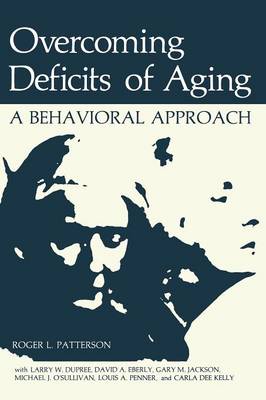NATO Science Series B
1 total work
89a
Overcoming Deficits of Aging
by Roger L. Patterson, Larry W. Dupree, David A. Eberly, Gary M. Jackson, Michael J. O'Sullivan, Louis A Penner, and Carla Dee Kelly
Published 31 October 1982
That older patients can be successfully treated has only recently been recognized by professionals and by older persons themselves. That older persons can also be taught new skills or retaught previously existing skills constitutes even newer knowledge. By focusing on the reversibility 0/ behavioral defidts in the elderly the authors, under the leadership of Dr. Roger Patterson, have made both a scientific and a humanitarian contribution to the well-being of older persons. In this volume they have presented a theoretical basis and a practical how-to method of overcoming behavioral deficits. They have demonstrated that their modular technique of fostering improved functioning in such areas as activities of daily living and sodal skills not only has been successful but also has allowed individuals to return to less restrictive environments or to completely independent living. The approach is an interdisciplinary one, appropriately since older people often experience diffirulties in multiple areas of function ing. The authors have tried to integrate social, medical, and behav ioral approaches, with an emphasis on behavioral methodologies. Although this book deals primarily with behavioral approaches to treatment of the elderly in a single setting, the volume c1early con stitutes achallenge to other scientists and clinicians to apply the techniques described here in other settings. A medical colleague of mine, a geriatrician, recently expressed the opinion that he had never encountered an older patient for whom he could not do something to improve health.
